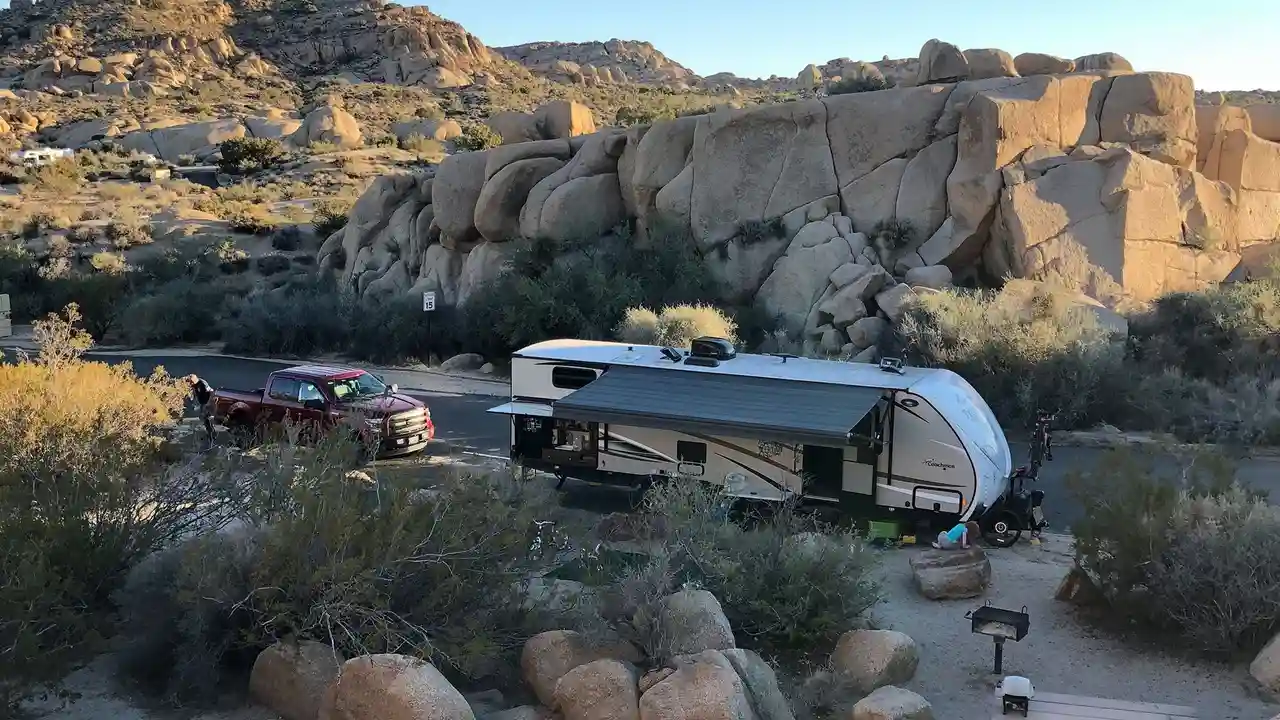Dealing with RV Black Water Tank Issues

Understanding Your RV Black Water Tank System
Let's talk about something no RV owner truly loves dealing with: the black water tank. It's a necessary evil, and understanding how it works is the first step in keeping it happy and odor-free. Your RV black water tank holds all the waste from your toilet. Unlike the grey water tank, which collects water from your sinks and shower, the black water tank requires special attention and care.
The typical RV black water system consists of the toilet, a holding tank (the black water tank itself), a drain valve, and a sewer hose for dumping. When you flush, waste and water enter the tank. It's crucial to use RV-specific toilet paper, which breaks down much faster than regular toilet paper, preventing clogs.
Knowing the capacity of your black water tank is also essential. This information is usually found in your RV's owner's manual or sometimes printed on the tank itself. Overfilling the tank can lead to serious problems, including backups and leaks.
Common RV Black Water Tank Problems
So, what can go wrong? Plenty! Here are some of the most common issues RVers face:
- Clogs: The dreaded clog! These are usually caused by using the wrong type of toilet paper, not using enough water when flushing, or a buildup of solids in the tank.
- Odor: A smelly black water tank is a sign that something isn't right. This can be due to a lack of water in the tank, a buildup of waste, or issues with the vent system.
- Sensor Issues: Those tank level sensors can be notoriously inaccurate. They often get coated with waste, giving false readings.
- Leaks: Leaks can occur in the tank itself, the drain valve, or the connections. These need to be addressed immediately to prevent damage and unsanitary conditions.
- Pyramid of Poo: Yes, it's as disgusting as it sounds. This happens when solids accumulate in a cone shape directly under the toilet, leading to clogs and sensor problems.
Preventing Black Water Tank Problems A Proactive Approach
Prevention is always better than cure, especially when dealing with RV black water tanks. Here's how to keep your tank happy and trouble-free:
- Use RV-Specific Toilet Paper: This is non-negotiable. Regular toilet paper doesn't break down properly and will cause clogs. Look for brands that are specifically labeled as "RV toilet paper" or "septic-safe."
- Use Plenty of Water: When you flush, use plenty of water. This helps to flush waste completely into the tank and prevents solids from accumulating. Consider adding a few extra cups of water after each flush.
- Tank Treatments: Use a good quality tank treatment to help break down waste and control odors. We'll discuss different types of treatments later.
- Regular Tank Cleaning: Flush your tank regularly, especially after each trip. A tank flush system or a wand can help to remove stubborn debris.
- The Geo Method: This popular method involves using a combination of water softener and laundry detergent to keep the tank clean. We'll discuss this in more detail below.
RV Black Water Tank Treatments Choosing The Right One
There are many different types of RV black water tank treatments available, each with its own pros and cons. Here's a breakdown of the most common types:
- Enzyme Treatments: These treatments use enzymes to break down waste and control odors. They're generally considered to be environmentally friendly. Examples include:
- Unique RV Digest-It: A popular enzyme-based treatment known for its effectiveness and pleasant scent. Around $25 for a 32-ounce bottle. Use case: Regular maintenance and odor control.
- Walex Bio-Pak: Another well-regarded enzyme treatment in convenient drop-in packets. About $20 for a pack of 30. Use case: Easy dosage and long-term use.
- Chemical Treatments: These treatments use chemicals, such as formaldehyde or bronopol, to kill bacteria and control odors. They are often more effective at controlling odors than enzyme treatments, but they are also more harsh on the environment. Examples include:
- Thetford Aqua-Kem: A classic chemical treatment known for its strong odor control. Around $15 for a 32-ounce bottle. Use case: Situations with particularly strong odors.
- Camco TST Orange: A chemical treatment with a pleasant orange scent. About $12 for a 32-ounce bottle. Use case: Masking odors and general cleaning.
- Probiotic Treatments: These treatments use beneficial bacteria to break down waste and control odors. They are similar to enzyme treatments but may be more effective in some cases. Examples include:
- Happy Campers Organic RV Holding Tank Treatment: A highly rated probiotic treatment known for its effectiveness and natural ingredients. Around $35 for a 45-treatment container. Use case: Environmentally conscious RVers seeking superior odor control.
- Homemade Treatments: Some RVers prefer to make their own tank treatments using household ingredients like borax, baking soda, and vinegar. While these can be effective, they may not be as potent as commercially available treatments.
Product Comparison:
| Treatment Type | Pros | Cons | Price Range |
|---|---|---|---|
| Enzyme | Environmentally friendly, effective at breaking down waste | May not be as effective at controlling strong odors | $20-$30 |
| Chemical | Strong odor control, effective at killing bacteria | Harsh on the environment | $10-$20 |
| Probiotic | Environmentally friendly, effective at breaking down waste and controlling odors | Can be more expensive than other options | $30-$40 |
| Homemade | Inexpensive, uses readily available ingredients | May not be as effective as commercial treatments | Variable |
The Geo Method A Detailed Explanation
The Geo Method is a popular and often recommended approach to maintaining a clean and odor-free RV black water tank. It relies on the cleaning power of water softener and laundry detergent. Here's a step-by-step guide:
- After Dumping: After you've dumped your black water tank, add about 5 gallons of water to the tank.
- Add Water Softener: Add about 1 cup of water softener (Calgon is a popular brand) to the tank. Water softener helps to prevent hard water deposits and keeps the tank clean.
- Add Laundry Detergent: Add about 1/2 cup of liquid laundry detergent (Tide is a commonly used brand) to the tank. The detergent helps to break down grease and grime.
- Drive and Agitate: As you drive to your next destination, the movement of the RV will agitate the mixture, helping to clean the tank.
- Repeat: Repeat this process after each dumping.
Why it works: The Geo Method works because the water softener helps to prevent hard water deposits, while the laundry detergent helps to break down grease and grime. The combination of these two ingredients keeps the tank clean and prevents odors.
Potential downsides: Some RVers worry about the long-term effects of laundry detergent on the tank's seals. While the amount used is relatively small, it's something to consider. Also, the Geo Method doesn't necessarily address issues with sensor accuracy.
Dealing With Clogs Black Water Tank Rescue
Despite your best efforts, clogs can still happen. Here's how to deal with them:
- The Ice Method: Fill the tank about halfway with water and then add several bags of ice. As you drive, the ice will help to break up the clog.
- The RV Toilet Wand: This is a wand with a high-pressure nozzle that you insert into the toilet to blast away clogs. Examples include:
- Camco RV Flexible Swivel Stik: A popular and affordable option for cleaning and unclogging black water tanks. Around $20. Use case: Breaking up clogs and rinsing tank walls.
- Tank Flush System: If your RV has a built-in tank flush system, use it to flush out the clog.
- Professional Help: If you've tried everything and the clog is still there, it's time to call a professional RV repair technician.
Addressing RV Black Water Tank Odor Control
Odor control is a key part of maintaining a pleasant RV experience. Here's how to keep your black water tank smelling fresh:
- Vent System: Make sure your RV's vent system is working properly. The vent allows air to escape from the tank, preventing pressure buildup and allowing odors to vent outside. Check for any blockages in the vent.
- Tank Treatments: Use a good quality tank treatment to control odors.
- Water: Make sure there's always water in the tank. This helps to prevent odors from escaping.
- Cleanliness: Keep the toilet and surrounding area clean.
RV Black Water Tank Sensor Issues Troubleshooting
Inaccurate tank level sensors are a common complaint among RVers. Here's how to troubleshoot them:
- Tank Cleaning: The first step is to thoroughly clean the tank. A tank flush system or a wand can help to remove stubborn debris.
- Sensor Cleaners: There are sensor cleaners available that can help to remove buildup from the sensors. Examples include:
- Valterra Sensor Cleaner: A specialized cleaner designed to remove buildup from RV tank sensors. Around $15. Use case: Restoring sensor accuracy.
- External Tank Monitoring Systems: Consider installing an external tank monitoring system that uses different technology to measure tank levels. Examples include:
- SeeLevel II Tank Monitoring System: A popular and reliable external tank monitoring system. Around $200-$300. Use case: Accurate tank level readings and eliminating sensor guesswork.
- Accept the Inaccuracy: Sometimes, you just have to accept that the sensors are not accurate and rely on your own judgment to determine when the tank is full. This involves learning the usage patterns and estimating fill levels based on experience.
Repairing RV Black Water Tank Leaks
Leaks are a serious problem that need to be addressed immediately. Here's how to repair them:
- Identify the Source: The first step is to identify the source of the leak. This may require a thorough inspection of the tank, drain valve, and connections.
- Small Cracks: For small cracks, you may be able to use an RV-specific sealant or epoxy. Examples include:
- Flex Seal: A versatile sealant that can be used to repair small cracks in RV tanks. Around $20. Use case: Sealing minor leaks and preventing further damage.
- Larger Leaks: For larger leaks, you may need to replace the tank.
- Professional Help: If you're not comfortable repairing the leak yourself, it's best to call a professional RV repair technician.
RV Black Water Tank Maintenance Checklist
Here's a handy checklist to help you keep your black water tank in top condition:
- After Each Trip:
- Dump the tank completely.
- Flush the tank thoroughly.
- Add tank treatment.
- Monthly:
- Inspect the vent system for blockages.
- Check for leaks.
- Annually:
- Consider a professional tank cleaning.
- Inspect the tank and connections for damage.
RV Black Water Tank Alternatives Composting Toilets
For RVers looking for a more environmentally friendly alternative to traditional black water tanks, composting toilets are an option. Here's how they work:
Composting toilets separate liquid and solid waste. Solid waste is collected in a container and mixed with a bulking agent, such as peat moss or coconut coir. Over time, the waste decomposes into compost. Liquid waste is either diverted to a separate holding tank or evaporated. Examples include:
- Nature's Head Composting Toilet: A popular and well-regarded composting toilet for RVs. Around $1000. Use case: Eco-conscious RVers seeking a waterless waste disposal solution.
Pros:
- Water Conservation: Composting toilets use very little or no water.
- Environmentally Friendly: They reduce the amount of waste that goes to landfills.
- No Black Water Tank: You don't have to deal with a black water tank.
Cons:
- Maintenance: Composting toilets require regular maintenance, including emptying the solids container and managing the composting process.
- Odor: If not properly maintained, composting toilets can produce odors.
- Cost: Composting toilets can be expensive to purchase and install.
RV Black Water Tank Myths Debunked
There are many myths surrounding RV black water tanks. Let's debunk a few of them:
- Myth: You have to dump your black water tank every day. Reality: You only need to dump your black water tank when it's full or when you're leaving a campsite.
- Myth: You can use regular toilet paper in your black water tank if you use enough water. Reality: Regular toilet paper doesn't break down properly and will cause clogs, regardless of how much water you use.
- Myth: You have to use expensive tank treatments to keep your black water tank clean. Reality: While tank treatments can be helpful, you can also use homemade solutions or the Geo Method to keep your tank clean.
Final Thoughts On RV Black Water Tank Management
Managing your RV black water tank doesn't have to be a daunting task. By understanding how the system works, taking preventative measures, and addressing problems promptly, you can keep your tank happy and odor-free, ensuring a more enjoyable RVing experience. Remember to always use RV-specific toilet paper, use plenty of water, and choose a tank treatment that works best for your needs. And don't be afraid to experiment with different methods and solutions to find what works best for you and your RV.
:max_bytes(150000):strip_icc()/277019-baked-pork-chops-with-cream-of-mushroom-soup-DDMFS-beauty-4x3-BG-7505-5762b731cf30447d9cbbbbbf387beafa.jpg)





